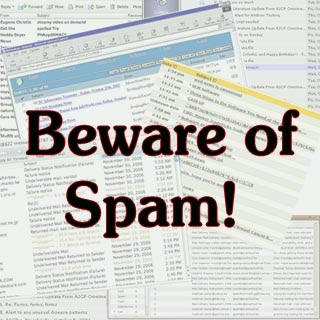
Viruses are destructive to computers and can terms a system in a kind of ways. Spam viruses or spyware can download multiple pop-up ads to your system that weak your computer performance and interrupt another computer functions. Spam viruses also send themselves out to other people through your e-mail. Removing spam viruses demands some industry and the proper use of anti-virus programs that can locate.
How to Remove Spam Virus
• Open your anti-virus software and click on the "Update" button on the start page. This will update your software so you gain the nearly last virus definitions.
• Disconnect your computer from the Internet by turning off your modem. Spam viruses are frequently downloading more advertizing content and more malware to the system through your Internet connection. Once your anti-virus software is updated, you need the Internet cut off until the computer virus has been erased. If you have a WiFi connection, you can right-click on the icon in the lower right corner task bar and select "disconnect." Several computers will also disable WiFi by holding down the "Fn" key and pushing "F2."
• Restart your computer and hold down F6 during start-up to initiate Safe Mode. Safe Mode should inactivate the virus temporarily, which makes it easier for the virus scanner to locate it. Viruses can cause pop-ups even when not online since the files are already downloaded, so this will also disable any pop-up ads from coming out while the computer is running since they'll all be deactivated.
• Scan your computer with your anti-virus software while it is in Safe Mode by opening the program and selecting the "Scan" option. Delete all the drooped files once the scan has finished. Most programs will do this for you when you click "Finish" but you may claim to highlight each program and click "Delete." The scan should be able to delete the pop-up ads the viruses have downloaded in addition to the virus itself.
• Restart your computer once again normally.
• Scan the computer once again. Some spam viruses require several scans to fully delete them and this second scan is just a obstructive measure to secure the virus isn't still forming up under regular conditions. If you start getting pop-up ads arising again, go back to Safe Mode and scan again.
• Connect the computer to the Internet again, formerly the virus has been removed and the scanner breaks no further hazards.
• Disconnect your computer from the Internet by turning off your modem. Spam viruses are frequently downloading more advertizing content and more malware to the system through your Internet connection. Once your anti-virus software is updated, you need the Internet cut off until the computer virus has been erased. If you have a WiFi connection, you can right-click on the icon in the lower right corner task bar and select "disconnect." Several computers will also disable WiFi by holding down the "Fn" key and pushing "F2."
• Restart your computer and hold down F6 during start-up to initiate Safe Mode. Safe Mode should inactivate the virus temporarily, which makes it easier for the virus scanner to locate it. Viruses can cause pop-ups even when not online since the files are already downloaded, so this will also disable any pop-up ads from coming out while the computer is running since they'll all be deactivated.
• Scan your computer with your anti-virus software while it is in Safe Mode by opening the program and selecting the "Scan" option. Delete all the drooped files once the scan has finished. Most programs will do this for you when you click "Finish" but you may claim to highlight each program and click "Delete." The scan should be able to delete the pop-up ads the viruses have downloaded in addition to the virus itself.
• Restart your computer once again normally.
• Scan the computer once again. Some spam viruses require several scans to fully delete them and this second scan is just a obstructive measure to secure the virus isn't still forming up under regular conditions. If you start getting pop-up ads arising again, go back to Safe Mode and scan again.
• Connect the computer to the Internet again, formerly the virus has been removed and the scanner breaks no further hazards.

















